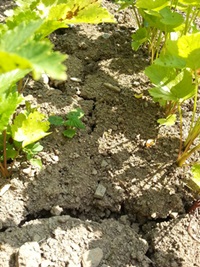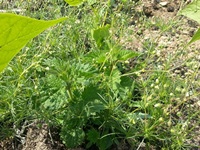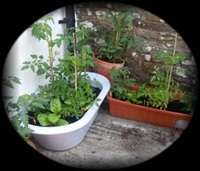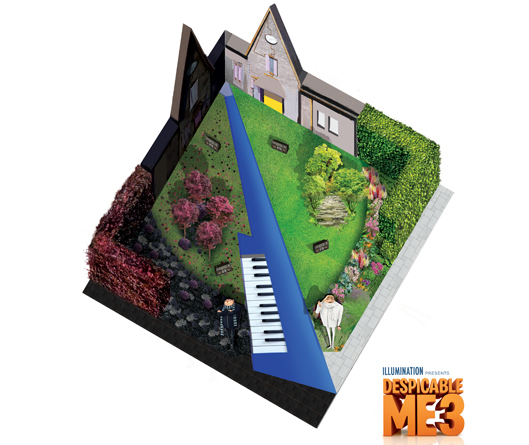![]()
This is a blog post I never thought I’d be writing in Ireland! With talks of draught and heatwaves and temperatures reaching in excess of 27ºC which puts the country in a Status Yellow situation, our poor gardens are looking brown and withered. Last year the farmers were supplementing their livestock with feed due to constant rain, this year they’re starting to feed them nuts and grain to protect the grass. Climate change is playing havoc and we have to learn to adapt.

drought in gardenAs gardeners you might be wondering what you can do to protect your plants in the garden during these high temperatures. We’re not in a position to water as much as the garden requires – clean water is an exhaustible resource and there’s talk of these high temperatures continuing throughout the summer.
Many people on our island draw their water from wells and are already wondering how best to protect this precious resource as talk circulates of wells running dry. If you’re using a mains supply it pays to be cautious too as reservoir levels begin to dip. Under these conditions you might be asking yourself when is the best time to water plants? Should you mow your grass or be watering it? What else can you do to protect your garden from drought?
Here’s my top 10 tips for helping you manage your garden during a heat wave.
1. Water in the evenings or mornings. The water will go straight to the roots of the plants and won’t evaporate. However, if a plant looks severely dehydrated, don’t wait, water it immediately.
2. Water deeply and infrequently using a watering can or hose pipe rather than little and often. When water is scarce young roots will search deep down into the soil, looking for reserves of moisture. If they’re only watered lightly and often they will send out shallow, surface roots that suffer in drought times.
3. Mulch the soil. Water the soil deeply and then cover with straw or compost which will help seal in the water and prevent evaporation.

4. Weed. Weeds will compete for moisture so it’s important to keep your beds weed free and allow every last drop of water to reach the roots of your plants and not their competitors. Tip: wet the soil first before weeding, they’ll pull out much easier.
5. Glasshouses and polytunnels. If you have a greenhouse drape shading material over the roof and leave polytunnel doors open day and night.
6. Lawn Care. If your vegetable garden is surrounded by grass, stop cutting it and don’t water it. Lawns stop growing during drought conditions but it’s unlikely it will die. When it rains they’ll magically change colour to the emerald greens we’re more familiar with and bounce back to life. Longer lawns will shade the grass roots helping to retail moisture. If you can’t bear to look at a longer lawn, raise the blades on the mower and don’t scalp the grass.
7. Use Grey Water. If your garden is surrounded by established trees and shrubs, they shouldn’t need watering at all. However, if their leaves start to look droopy you could use your bath, sink or washing machine water, known as grey water. Don’t use grey water on fruit or vegetable plants or any water that’s been sitting around in your bath for longer than 24 hours as bacteria can build up are any water that contains bleach or strong detergents. There are grey water irrigation kits available to help you syphon it out of showers etc into buckets. In Ireland Purchase.ie stock them online. Water recycling would be a good practice to get into given how precious this resource is and with water metering being introduced in Ireland in the future, now’s your chance to try it!
8. Container gardening. If you’re growing vegetables in containers they’ll need watering every day during the drought. Once watered cover the soil with mulch or decorative gravel to prevent evaporation.

9. Group containers together which can create humid microclimates and place them in shadier places to keep them cooler.
10. Prepare for next year, who knows what weather we’ll experience. Dig in lots of compost in the autumn which will help with soil structure and install water butts. Here’s an old blog post that contains more tips for helping you to preserve your water supply.

Dee Sewell – a horticulturalist and certified trainer who started Greenside Up in 2009 and teaches people how to grow vegetables. Dee specialises in working with community gardens but also offers workshops, allotment visits, consultations, horticultural therapy, afterschools clubs as well as local talks – she tailors her services to meet clients needs. In 2012 Dee launched a Seed Gift Collection containing varieties of vegetable and insect friendly flowers with the aim of getting more people growing. Dee’s blog was a finalist in the 2012 Ireland Blog Awards in the Eco/Green and Lifestyle Categories.




